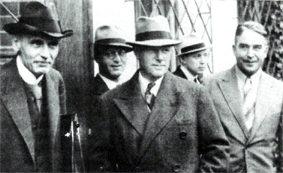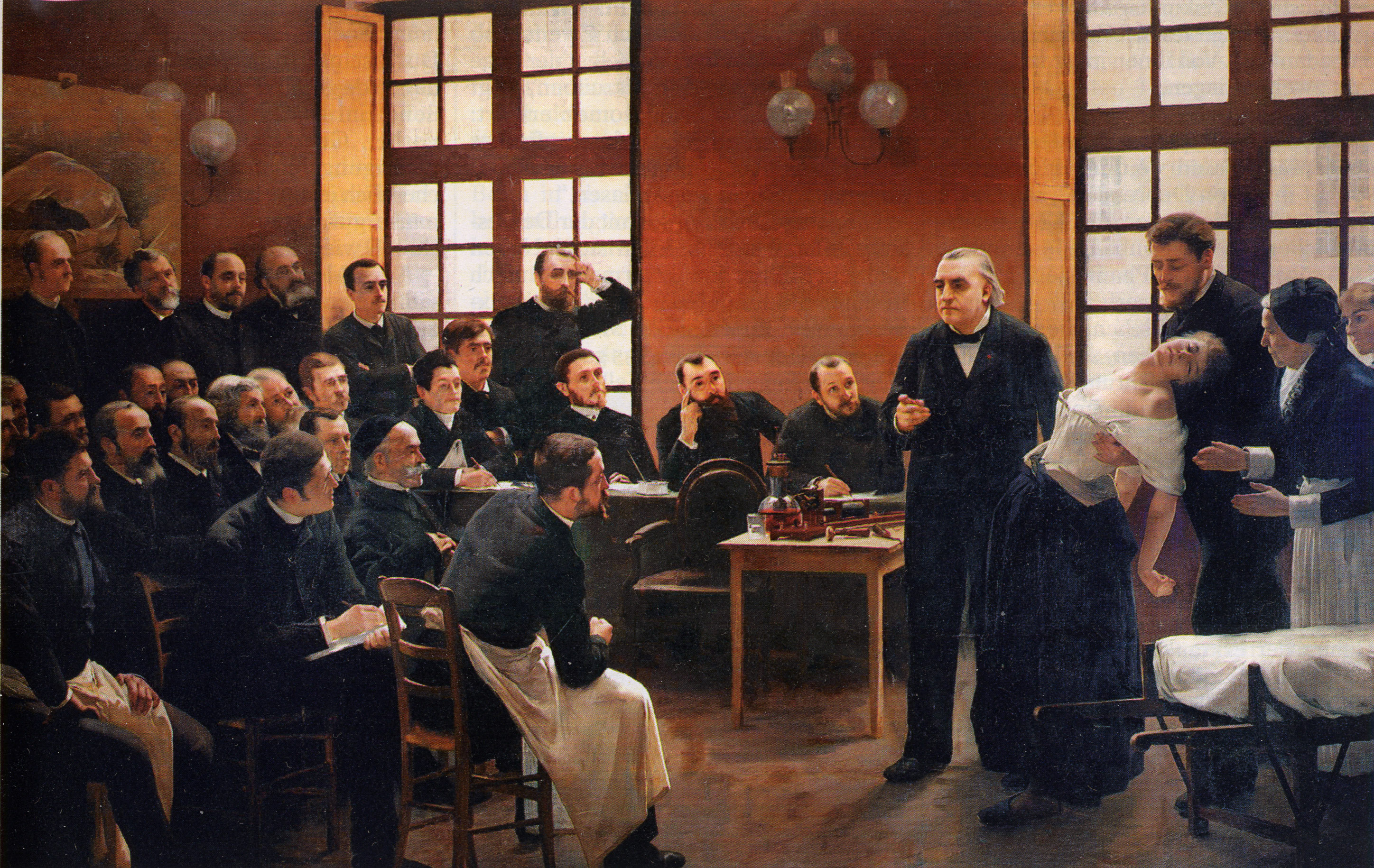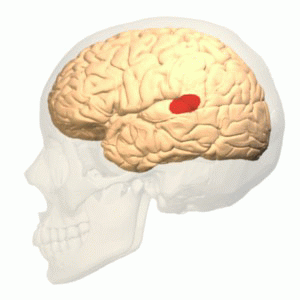|
Otfrid Foerster
Otfrid Foerster (9 November 1873 – 15 June 1941) was a German neurologist and neurosurgeon, who made innovative contributions to neurology and neurosurgery, such as rhizotomy for the treatment of spasticity, anterolateral cordotomy for pain, the hyperventilation test for epilepsy, Foerster's syndrome, the first electrocorticogram of a brain tumor, and the first surgeries for epilepsy. He is also known as the first to describe the dermatomes (an area of skin that is supplied by a single pair of dorsal nerve roots), and he helped map the motor cortex of the cerebrum. Life Foerster was born in Breslau (now Wrocław) to Richard Foerster, and studied in the Maria Magdalenen Gymnasium, graduating 1892. From 1892 to 1896 he studied medicine in Freiburg, Kiel and Breslau, obtaining his licensure by state examination in 1897 and his doctorate in the same year. Upon completion of the doctoral studies, he spent two years studying abroad, following a suggestion by Karl Wernicke (1848 ... [...More Info...] [...Related Items...] OR: [Wikipedia] [Google] [Baidu] |
Richard Foerster (classical Scholar)
Richard Foerster (March 2, 1843 – August 7, 1922) was a German classical scholar. Biography Though born and raised in Görlitz, Foerster never saw himself a Lusatian and felt the strongest allegiance to Silesia, where he studied since winter term 1861 after a semester at Jena. In Breslau he dropped theology and concentrated on classics in a comprehensive way. Apart from Greek and Roman literature (under Jacob Bernays and Martin Hertz) he studied metrics under Rudolf Westphal, archaeology under August Rossbach, Sanskrit under Adolf Friedrich Stenzler. His doctoral thesis was inspired by Friedrich Haase and dealt with a phaenomenon in Greek grammar called ''attractio casus''. From 1866 on Foerster worked as a substitute teacher at the ''Maria-Magdalenen-Gymnasium'' in Breslau. After being promoted to ''Dr. phil.'' in 1866 and earning the ''venia legendi'' via habilitation in 1868, Foerster was granted the Travel Stipend of the German Archaeological Institute. The next ... [...More Info...] [...Related Items...] OR: [Wikipedia] [Google] [Baidu] |
Jean-Martin Charcot
Jean-Martin Charcot (; 29 November 1825 – 16 August 1893) was a French neurology, neurologist and professor of anatomical pathology. He worked on hypnosis and hysteria, in particular with his hysteria patient Louise Augustine Gleizes. Charcot is known as "the founder of modern neurology",Lamberty (2007), p. 5 and his name has been associated with at least 15 medical eponyms, including #Eponyms, various conditions sometimes referred to as Charcot diseases. Charcot has been referred to as "the father of French neurology and one of the world's pioneers of neurology". His work greatly influenced the developing fields of neurology and psychology; modern psychiatry owes much to the work of Charcot and his direct followers.Bogousslavsky (2010), p. 7 He was the "foremost neurologist of late nineteenth-century France" and has been called "the Napoleon Bonaparte, Napoleon of the Neurosis, neuroses". Personal life Born in Paris, Charcot worked and taught at the famous Pitié-Salpêtri� ... [...More Info...] [...Related Items...] OR: [Wikipedia] [Google] [Baidu] |
Psychiatry
Psychiatry is the medical specialty devoted to the diagnosis, prevention, and treatment of mental disorders. These include various maladaptations related to mood, behaviour, cognition, and perceptions. See glossary of psychiatry. Initial psychiatric assessment of a person typically begins with a case history and mental status examination. Physical examinations and psychological tests may be conducted. On occasion, neuroimaging or other neurophysiological techniques are used. Mental disorders are often diagnosed in accordance with clinical concepts listed in diagnostic manuals such as the ''International Classification of Diseases'' (ICD), edited and used by the World Health Organization (WHO) and the widely used '' Diagnostic and Statistical Manual of Mental Disorders'' (DSM), published by the American Psychiatric Association (APA). The fifth edition of the DSM (DSM-5) was published in May 2013 which re-organized the larger categories of various diseases and expanded upon the p ... [...More Info...] [...Related Items...] OR: [Wikipedia] [Google] [Baidu] |
Physical Therapy
Physical therapy (PT), also known as physiotherapy, is one of the allied health professions. It is provided by physical therapists who promote, maintain, or restore health through physical examination, diagnosis, management, prognosis, patient education, physical intervention, rehabilitation, disease prevention, and health promotion. Physical therapists are known as physiotherapists in many countries. In addition to clinical practice, other aspects of physical therapist practice include research, education, consultation, and health administration. Physical therapy is provided as a primary care treatment or alongside, or in conjunction with, other medical services. In some jurisdictions, such as the United Kingdom, physical therapists have the authority to prescribe medication. Overview Physical therapy addresses the illnesses or injuries that limit a person's abilities to move and perform functional activities in their daily lives. PTs use an individual's history and physic ... [...More Info...] [...Related Items...] OR: [Wikipedia] [Google] [Baidu] |
Heinrich Frenkel
Heinrich Simon Frenkel (June 5, 1860, in Heiden, Switzerland – April 21, 1931, in Dresden- Loschwitz) was a Swiss physician and neurologist born in Heiden, a town overlooking Lake Constance. He was an early practitioner of neuro- rehabilitation, advocating a regimen of special exercises for patients with neurological disorders. Biography He studied medicine at the Universities of Heidelberg and Leipzig, and was a student of neurologist Wilhelm Heinrich Erb (1840–1921). In 1884 he earned his degree at Leipzig, afterwards returning to Heiden to practice medicine. At Heiden he rented a house in "Cure Park" and filled it with specialized exercise equipment. Here he established a center of physical medicine and rehabilitation, where patients with neurological impairments could reinstate dexterity and improve mobility. Frenkel achieved great success with therapeutic exercises for cerebellar ataxia and ataxia. This success eventually attracted patients from all parts of Europe, ... [...More Info...] [...Related Items...] OR: [Wikipedia] [Google] [Baidu] |
Joseph Babinski
Joseph Jules François Félix Babinski ( pl, Józef Julian Franciszek Feliks Babiński; 17 November 1857 – 29 October 1932) was a French-Polish professor of neurology. He is best known for his 1896 description of the Babinski sign, a pathological plantar reflex indicative of corticospinal tract damage. Life Born in Paris, Babinski was the son of a Polish military officer, Aleksander Babiński (1824–1889), and his wife Henryeta Weren Babińska (1819–1897),Joseph Babinski nndb.com who in 1848 fled for because of a Tsarist reign of terror instigated to stall Polish attempts at achieving independence an ... [...More Info...] [...Related Items...] OR: [Wikipedia] [Google] [Baidu] |
Pierre Marie
Pierre Marie (9 September 1853 – 13 April 1940) was a French neurologist and political journalist close to the SFIO. Medical Career After finishing medical school, he served as an interne (1878), working as an assistant to neurologist Jean-Martin Charcot (1825–1893) at the Salpêtrière and Bicêtre Hospitals in Paris. In 1883 he received his medical doctorate with a graduate thesis on Basedow’s disease, being promoted to ''médecin des hôpitaux'' several years later (1888). In 1907 he attained the chair of pathological anatomy at the Faculty of Medicine, and in 1917 was appointed to the chair of neurology, a position he held until 1925. In 1911 Marie became a member of the ''Académie de Médecine''. One of Marie's earlier contributions was a description of a disorder of the pituitary gland known as acromegaly. His analysis of the disease was an important contribution in the emerging field of endocrinology. Marie is also credited as the first to describe pulmonary hy ... [...More Info...] [...Related Items...] OR: [Wikipedia] [Google] [Baidu] |
Joseph Jules Dejerine
Joseph Jules Dejerine (3 August 1849 – 26 February 1917), was a French neurologist. Biography Joseph Jules Dejerine was born to French parents in Geneva, Switzerland, where his father was a carriage proprietor. During the Franco-Prussian War (1870) Dejerine worked as a volunteer in a Geneva Hospital and in the spring of 1871 decided to pursue his medicine studies in Paris. In France, he was introduced to and subsequently became a pupil of Alfred Vulpian, a notable neurologist. Following qualification he achieved the academic ranks and gained several awards. In 1877 he was appointed to the Hôpital Bicêtre, where he organized a pathological laboratory. He became ''professeur agrégé'' in 1886, and he found the opportunity to concentrate his efforts on neurology. He worked at the Hôpital Salpêtrière from 1895, became professor of the history of medicine in 1901 and received a senior appointment at the Salpêtrière in 1911 as professor of neurology at the University of Pa ... [...More Info...] [...Related Items...] OR: [Wikipedia] [Google] [Baidu] |
Paris
Paris () is the capital and most populous city of France, with an estimated population of 2,165,423 residents in 2019 in an area of more than 105 km² (41 sq mi), making it the 30th most densely populated city in the world in 2020. Since the 17th century, Paris has been one of the world's major centres of finance, diplomacy, commerce, fashion, gastronomy, and science. For its leading role in the arts and sciences, as well as its very early system of street lighting, in the 19th century it became known as "the City of Light". Like London, prior to the Second World War, it was also sometimes called the capital of the world. The City of Paris is the centre of the Île-de-France region, or Paris Region, with an estimated population of 12,262,544 in 2019, or about 19% of the population of France, making the region France's primate city. The Paris Region had a GDP of €739 billion ($743 billion) in 2019, which is the highest in Europe. According to the Economist Intelli ... [...More Info...] [...Related Items...] OR: [Wikipedia] [Google] [Baidu] |
Karl Wernicke
Carl (or Karl) Wernicke (; ; 15 May 1848 – 15 June 1905) was a German physician, anatomist, psychiatrist and neuropathologist. He is known for his influential research into the pathological effects of specific forms of encephalopathy and also the study of receptive aphasia, both of which are commonly associated with Wernicke's name and referred to as Wernicke encephalopathy and Wernicke's aphasia, respectively. His research, along with that of Paul Broca, led to groundbreaking realizations of the localization of brain function, specifically in speech. As such, Wernicke's area (a.k.a. Wernicke's Speech Area) has been named after the scientist. Biography Wernicke was born on May 15, 1848, in Tarnowitz, a small town in Upper Silesia, Prussia, now Tarnowskie Góry, Poland. He obtained his secondary education at the gymnasium in Oppeln, which is a school near the university of Breslau. Wernicke then studied medicine at the University of Breslau and did graduate work studying lan ... [...More Info...] [...Related Items...] OR: [Wikipedia] [Google] [Baidu] |






